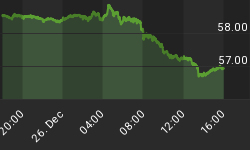If the August Non-farm Payroll report produces a number of less than 100k jobs, the chances of QE III being announced on September 13th are close to 100%. However, if the number is north of 100k the odds drop, but are still about 80% on more Fed money printing.
The truth is that the worsening global economy is going to force the hands of both the Fed and ECB. For example, China's exports to EU (17) dropped 16.2% in July, as sales to Italy plunged 26.6% from a year earlier. The stumbling world economy has sent prices for base metals like iron ore falling 33% since July, which is the lowest level since October 2009. And now the nucleus of Europe, Germany, is starting to split. German unemployment increased five straight months in August to reach 2.9 million. Factory orders fell 7.8% in June YOY as manufacturing output contracted further in August. Finally, EU (17) unemployment hit a Euro-era record 11.3% in July, as U.S. initial jobless claims and the unemployment rate have started to creep back up.
But listen up all you lovers of the Phillips Curve and inflation atheists; Spain's unemployment rate has just reached another Euro-era high of 25.1% in July. However, inflation is headed straight up, rising from 1.8% in June, to 2.7% in August. But this is just the beginning of rising unemployment and inflation. Just wait until the ECB and Fed launch their attack on their currencies in September.
The European Central Bank and Federal Reserve are both about to announce this very month an incredible assault on the Euro and the dollar. The European Union said on August 31st that it proposes to grant the ECB sole authority to grant all banking licenses. This means the ECB would be allowed to make the European Stabilization Mechanism a bank -- if sanctioned by the German courts on September 12th. That would allow them an unfettered and unlimited ability to purchase PIIGS' debt and is exactly what Mario Draghi meant when he said he would do "whatever it takes to save the Euro."
Not to be outdone, Fed Chairman Bernanke gave a speech on the same day indicating that open-ended quantitative easing will most likely be announced on September 13th. Fed Presidents Eric Rosengren and John Williams spelled out what open-ended QE means. The Fed would print about $50 billion per month of newly created money until the unemployment rate and nominal GDP reach targets levels set by the central bank.
Incredibly, Mr. Bernanke said in his speech at Jackson Hole, WY that previous QEs have provided "meaningful support" for the economic recovery. He then quickly contradicted himself by saying that the recovery was "tepid" and that the economy was "far from satisfactory." He also said, "The costs of nontraditional policies, when considered carefully, appear manageable, implying that we should not rule out the further use of such policies if economic conditions warrant." He continued, "...the Federal Reserve will provide additional policy accommodation as needed to promote a stronger economic recovery and sustained improvement in labor-market conditions in a context of price stability." Mr. Bernanke actually believes he has provided the economy with price stability, despite the fact that oil prices have gone from $147 to $33 and back to $100 per barrel all under his watch--precisely due to Fed manipulations.
Therefore, the Fed also believes their attack on the dollar has helped the economic recovery and that it has been conducted with little to no negative consequences. Of course, to believe that you first have to ignore our rising unemployment rate and also fail to recognize the destruction of the middle class that has occurred since 2008. And incredibly, Bernanke also believes the $2 trillion worth of counterfeiting hasn't quite been enough to bring about economic prosperity, so now he's going have to do a lot more.
The saddest part of all is that the Fed and ECB don't realize their infatuation with inflation, artificial low rates and debt monetization has allowed the U.S. and Europe the ability to borrow way too much money. Their debt to GDP ratios have increased to the point that these nations now stand on the brink of insolvency. And now these central banks will embark on an unprecedented money printing spree that will eventually cause investors to eschew their currencies and bonds. Therefore, they have managed to turn what would have been a severe recession in 2008, into the current depression in Southern Europe; and a currency and bond market crisis in the U.S. circa 2015.
It looks like fiat currencies will get flushed in September. The only good news here is that the failed global experiment in counterfeit currencies may be quickly coming to an end. In the interim, investors that have exposure to energy and precious metal commodities will find sanctuary.
















